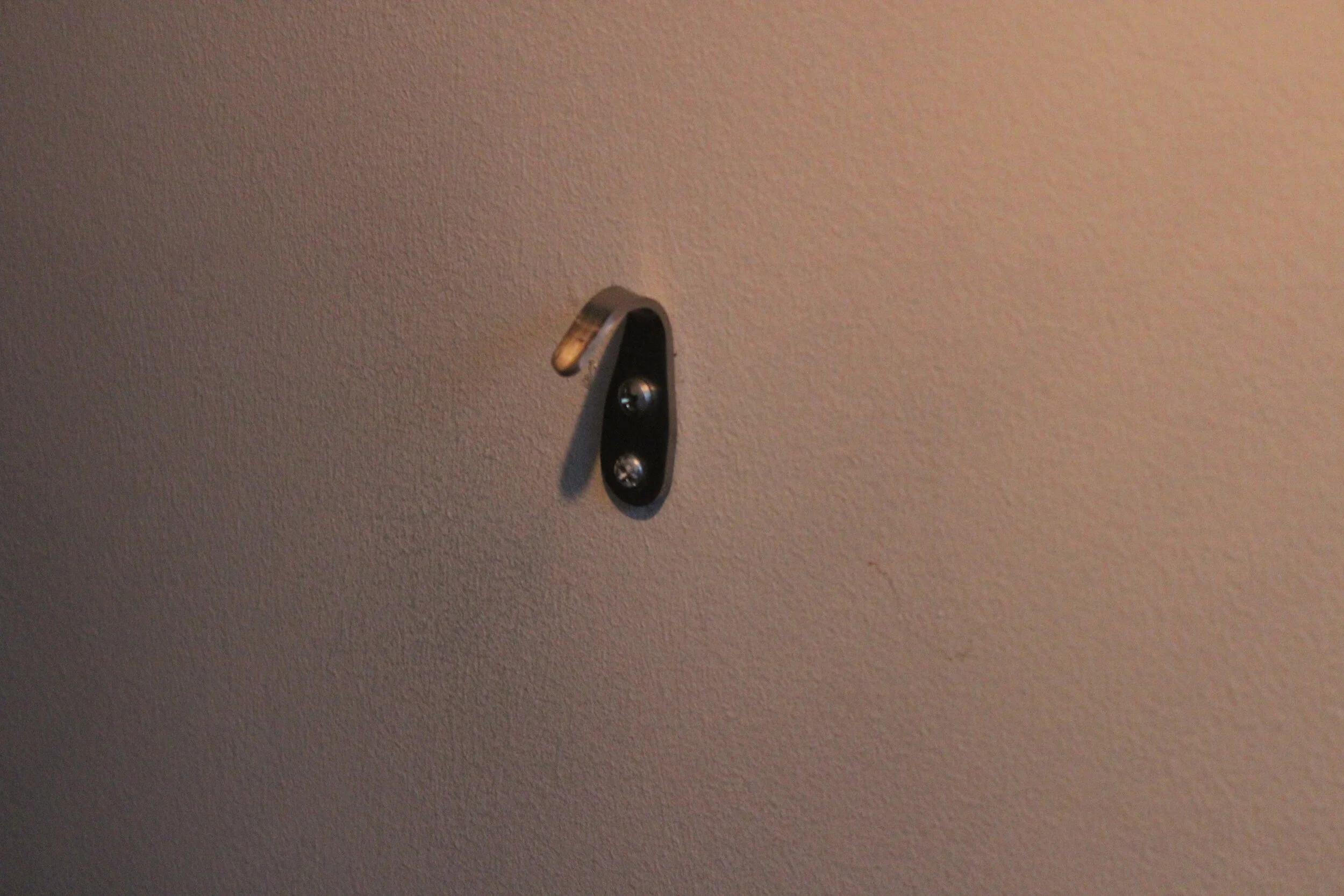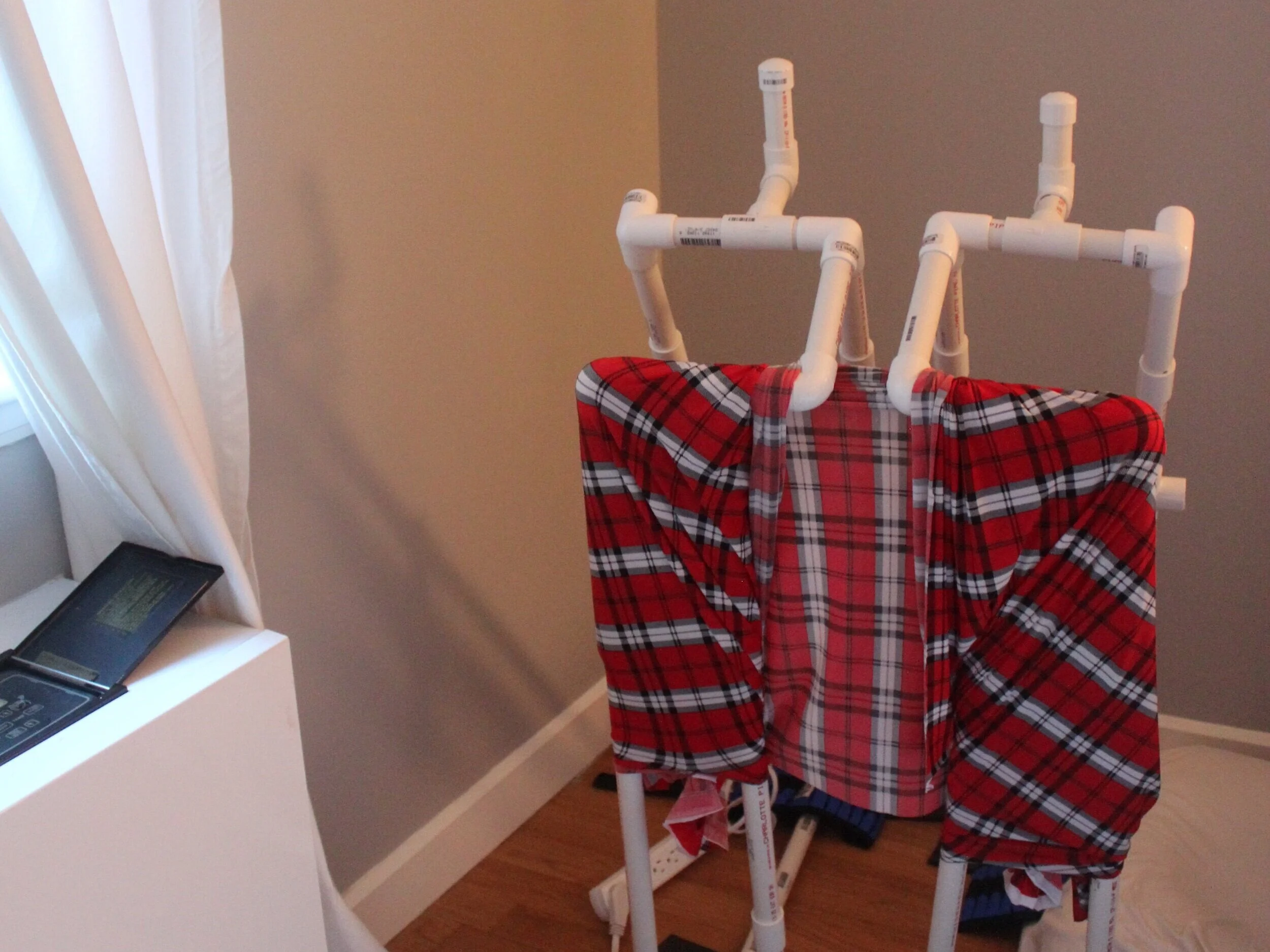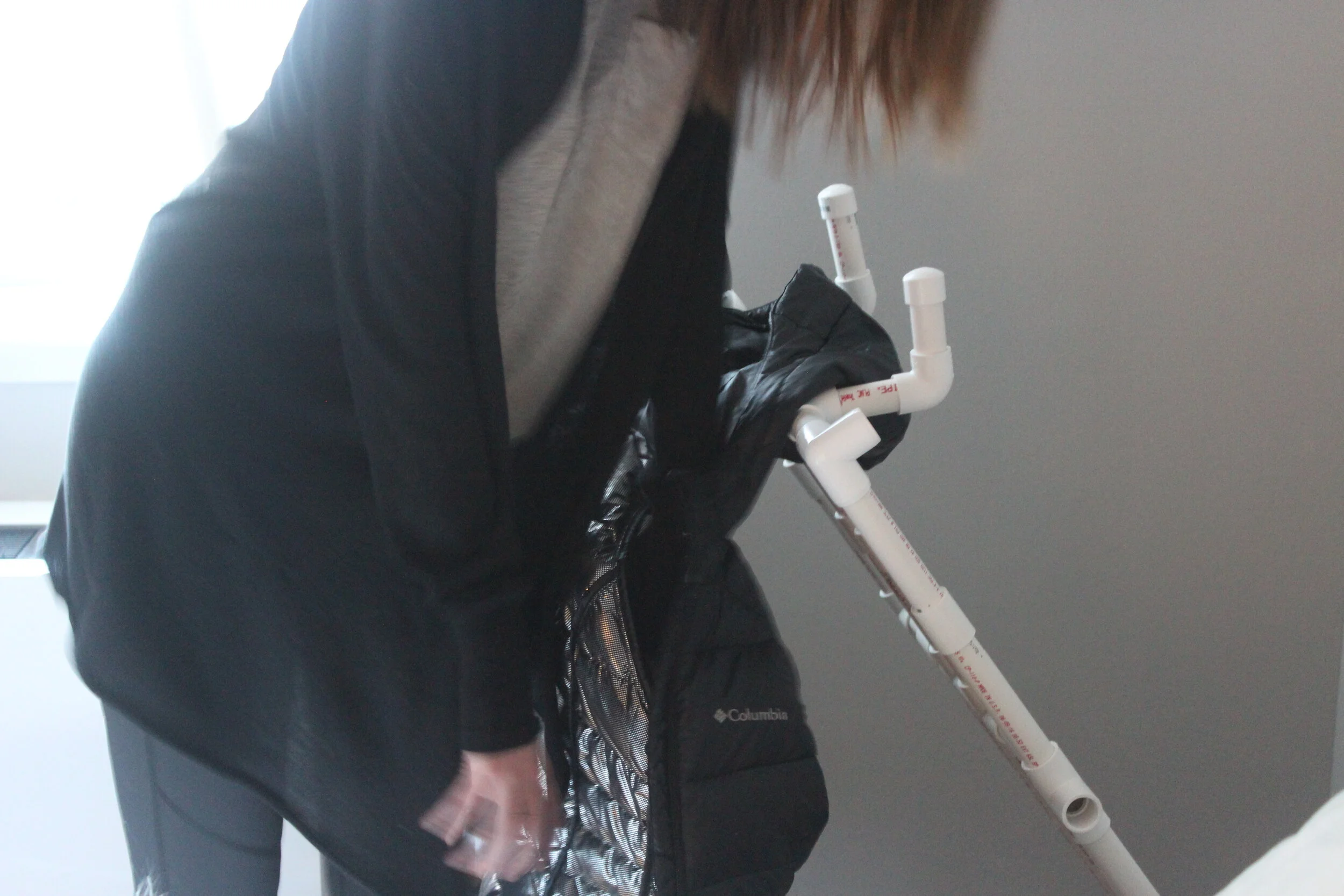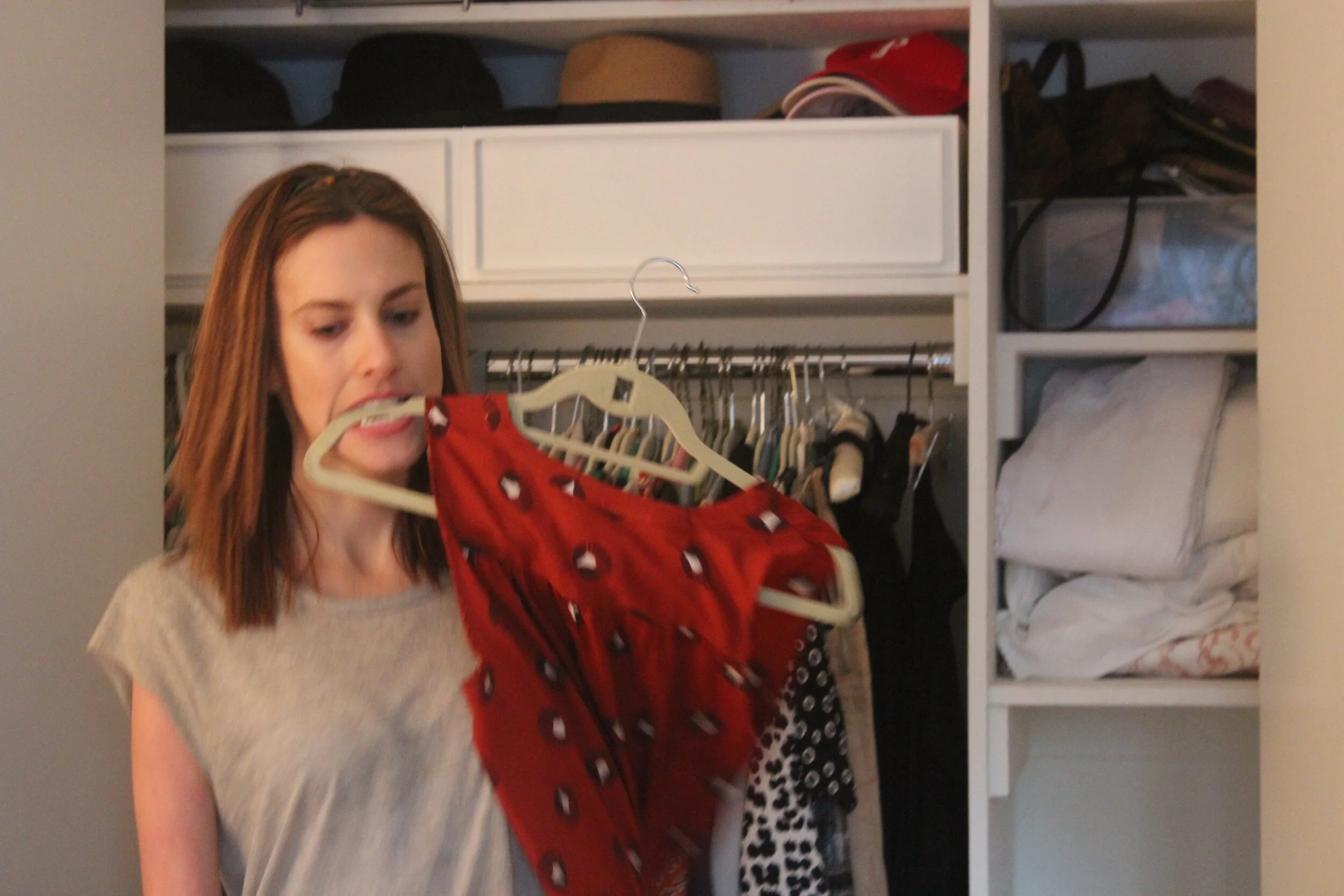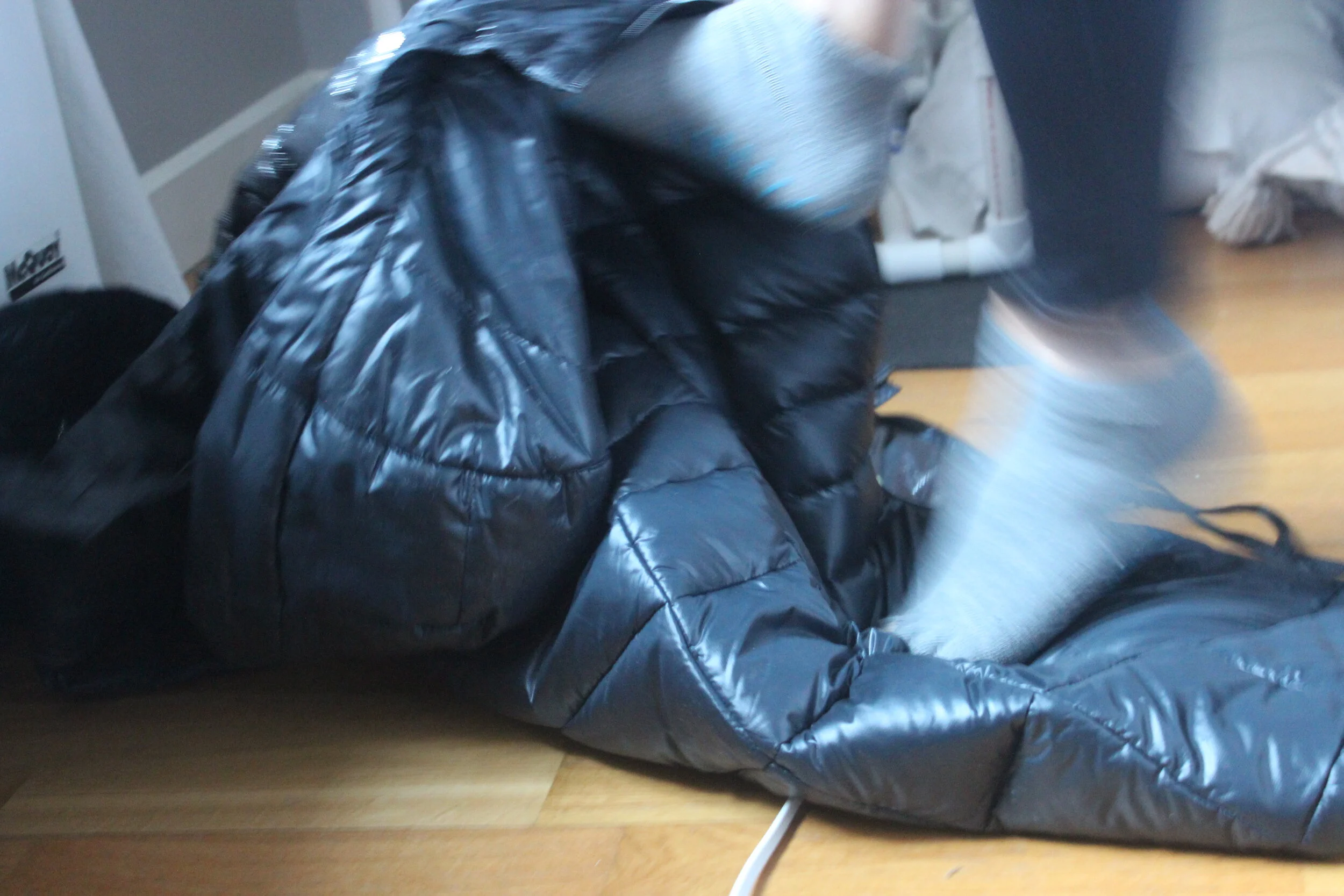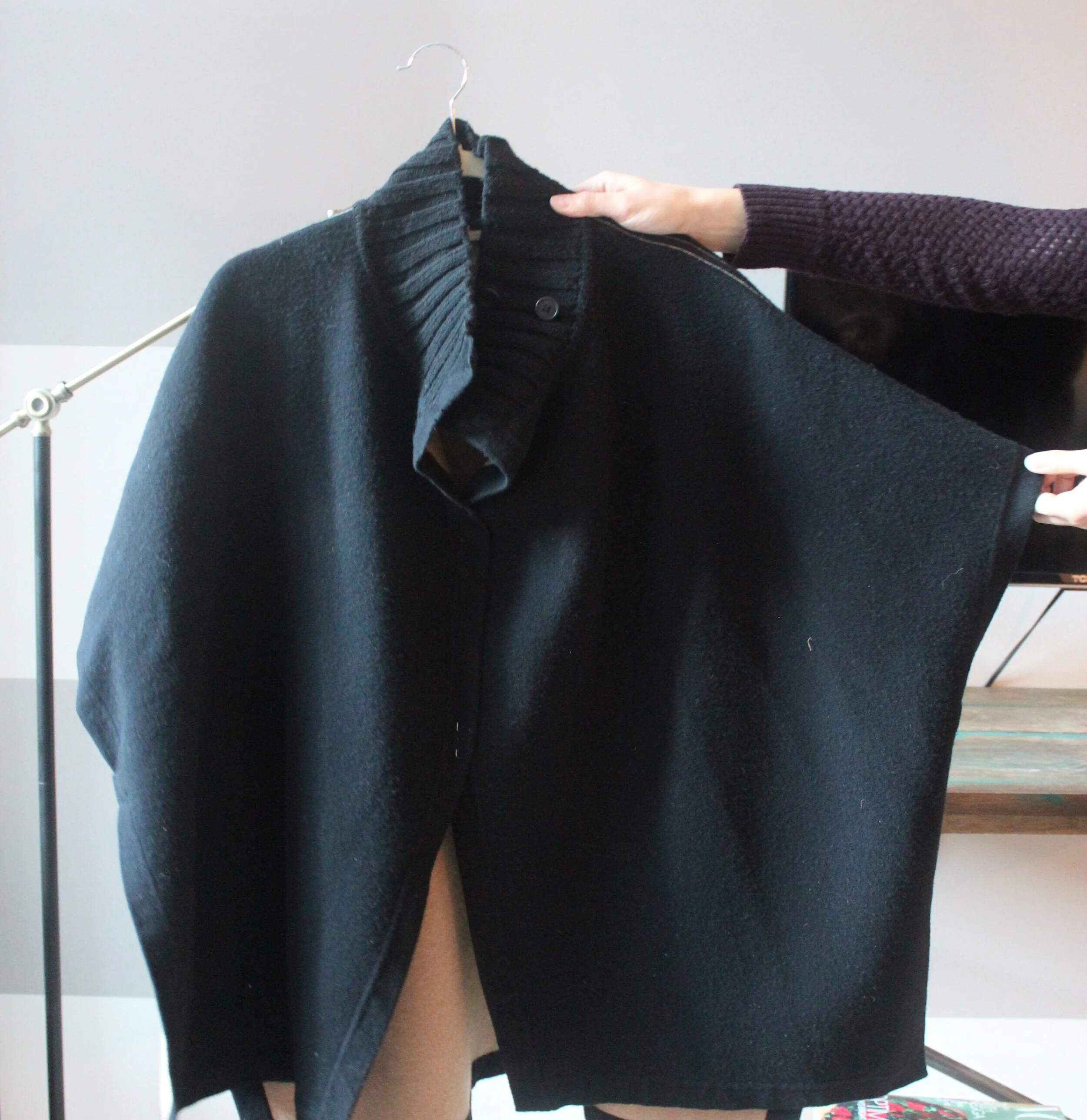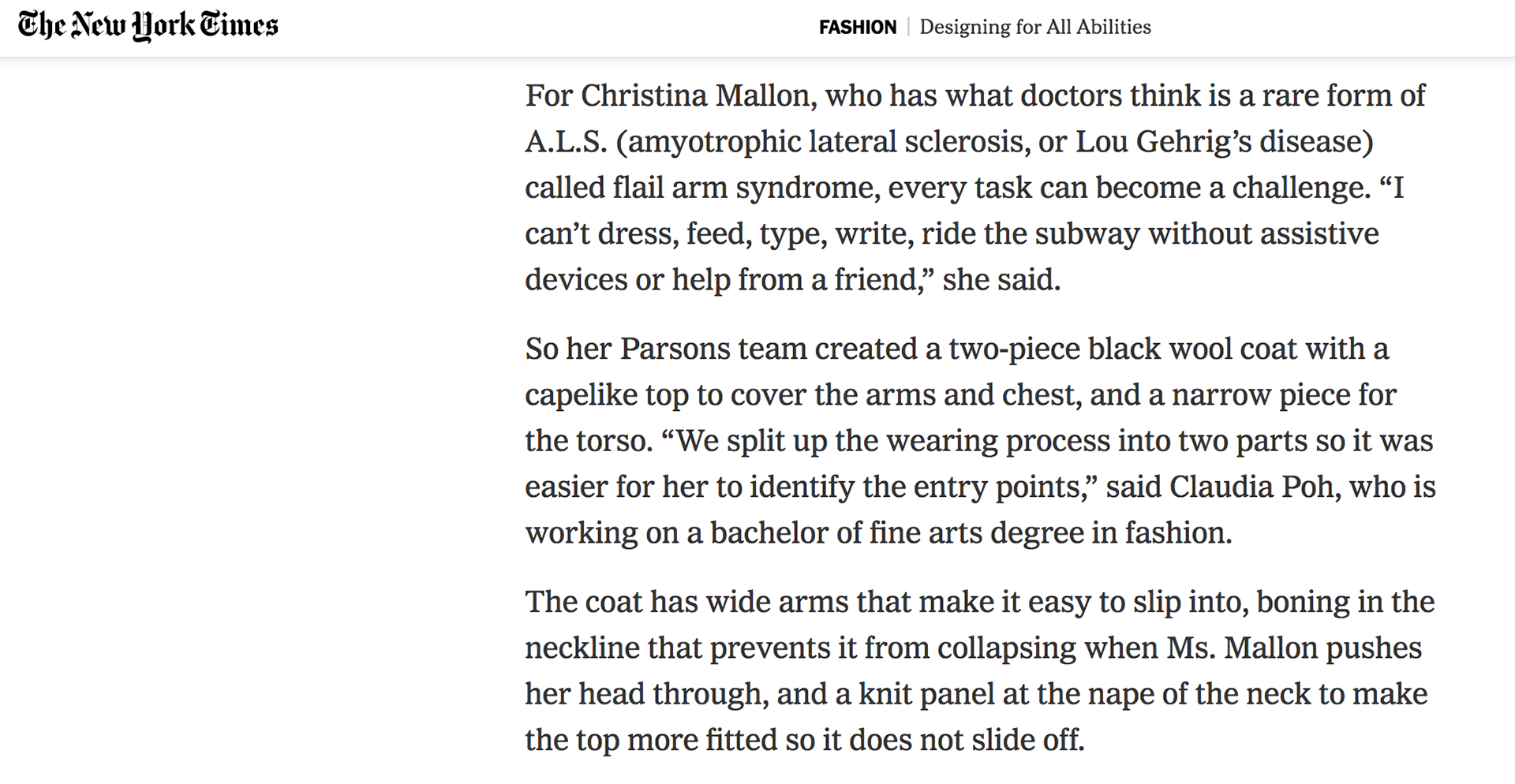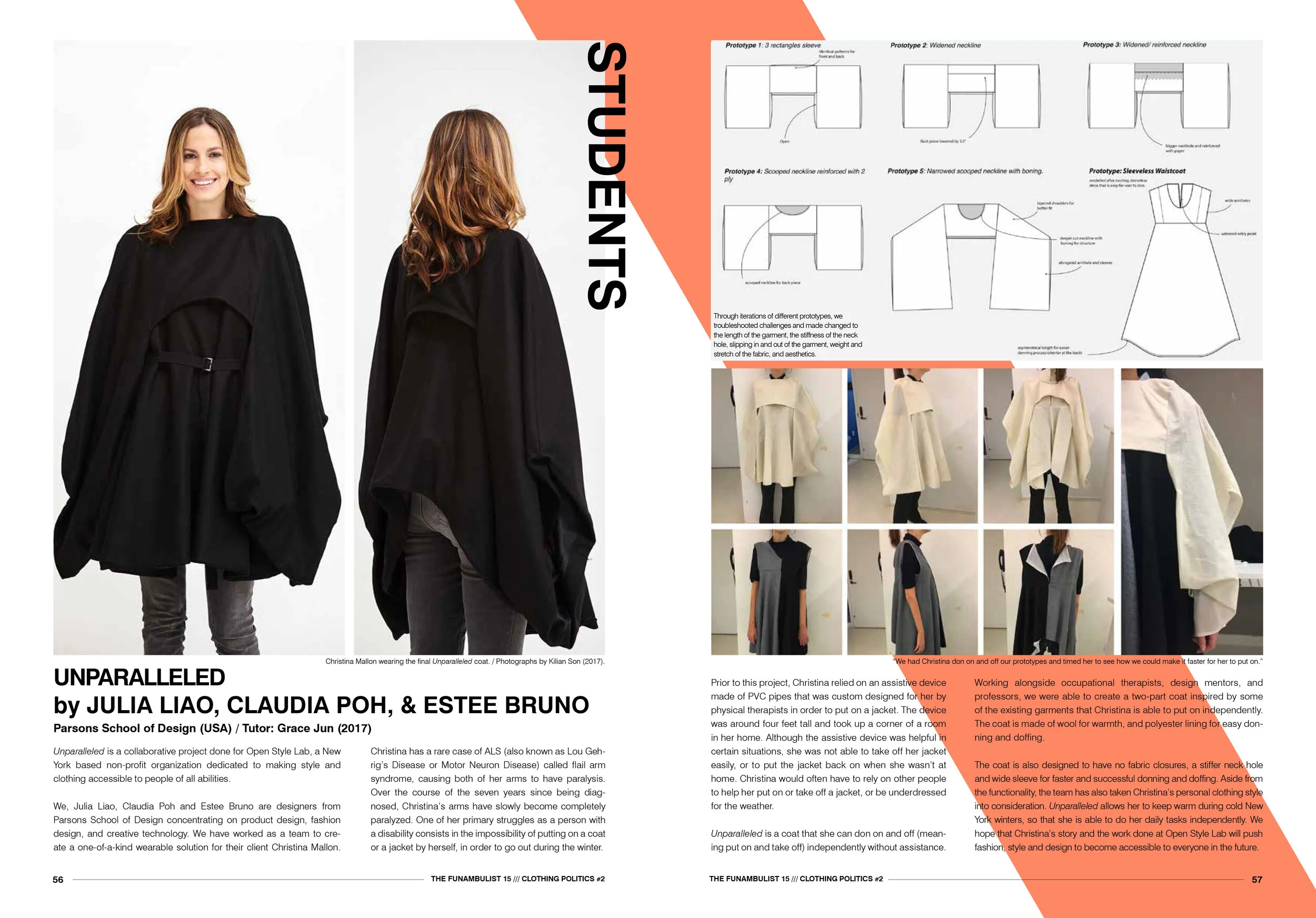
Unparalleled
UNPARALLELED
Unparalleled seeks to create a coat that Christina can don and doff in public, as well as a tool that can help her swipe a MetroCard so that she can take the subway independently. These products help her to live independently and to provide her with better options.
Roles + Responsibilities
-UX Designer
- Engineer prototypes and user test coat and metro device.
- Design and pick out materials.
- Photograph and record final shoots.
- Write report on process.
Colleagues in group: Claudia Poh (Fashion Designer), and Julia Liao(Industrial Product Designer)
Scope + Constraints
This was a group project, with a 14 week timeline. The design requirements were:
Can be put on and used with limited range of motion
Public Accessibility
Provide wider range of options
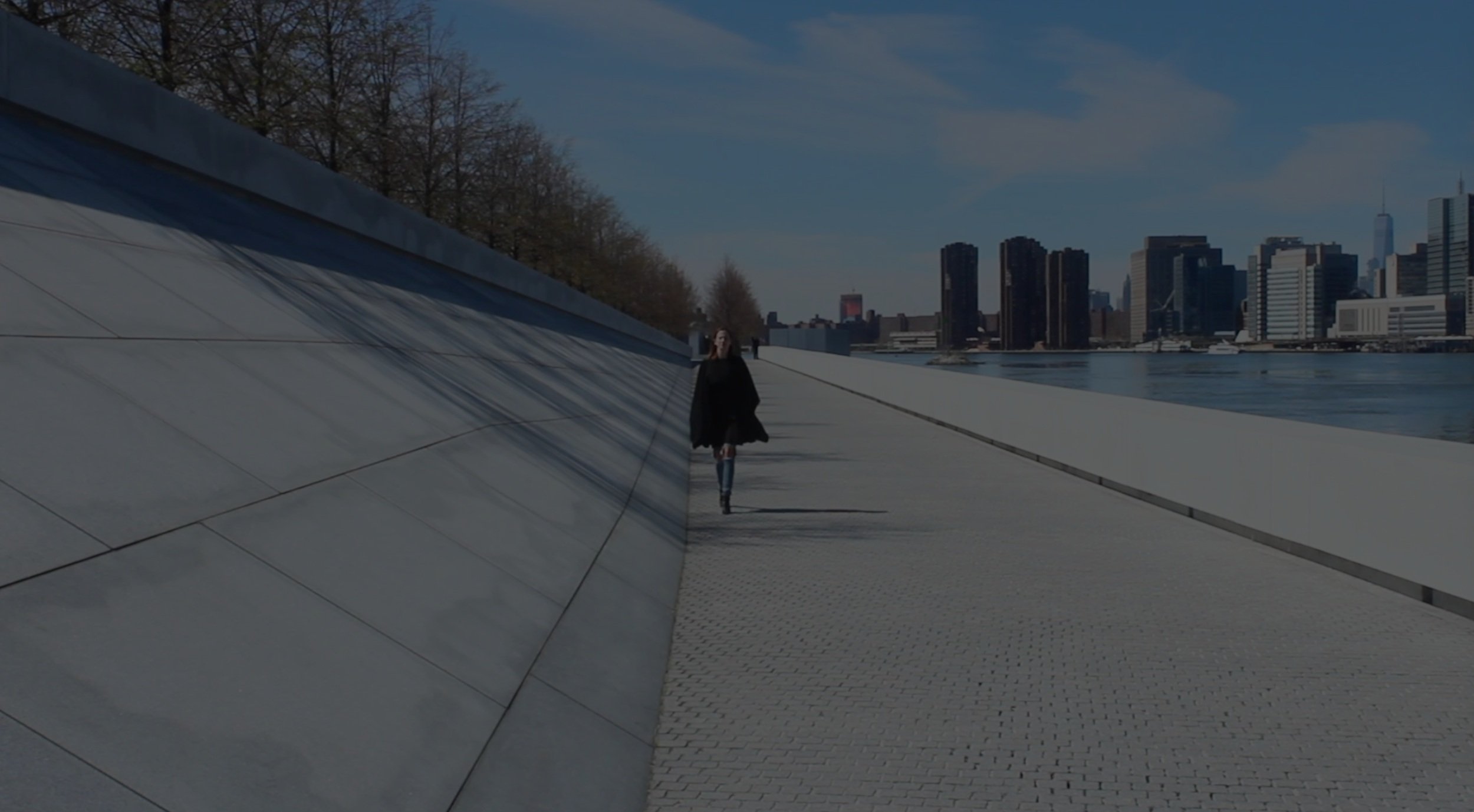
Problem
Our user is 27 years old and has a full time job working as a Social Media manager. She has a form of ALS, also known as amyotrophic lateral sclerosis, called flail arm syndrome, which has left her arms and hands completely paralyzed. She has been disabled with ALS for the past six years. When we first met Christina, she told us some of her goals that she would like us to achieve. Her goals include being able to don on and doff her winter coat, doesn’t want an assistive device for her coat, needs a way to use her metrocard more easily, gloves for her hands, and use of her phone that is easier. We narrowed it down to the two main problems of a winter coat and using the MetroCard.
User + Audience
Christina is a client that has a form of ALS, also known as amyotrophic lateral sclerosis, called flail arm syndrome, which has left her arms and hands completely paralyzed. The coat and MetroCard device are accessible for people with disabilities.
Research
Went to clients home and saw how she normally puts on a coat herself and see what assistive tools she currently uses. This helped us to see what might work for prototypes, and what doesn’t already work her.
Christina welcomed us into her home and we were immediately able to get a direct observation of her usual environment and everyday struggles. Because of these observations we were able to create our goals that match her needs. We noticed that she likes patterns and chic clothing, like Club Monaco and Zara, and also her closet had a collection of colorful patterns.
There are a few things set up in her apartment to make accessibility better for her. Some of those things include the handle for refrigerator door that is much bigger than normal and the placement of the microwave, which is on the bottom shelf of a bookcase. One of the most important things we saw was the upside hook she has the wall to help her don on and doff clothing. Another important device she has is a coat hanger that was made from NYU. It is supposed to help her put on a coat more easily, but she can only use it at home. We asked her to try putting on a sleeveless dress, because she told us she has no issues with summer clothes. Therefore, we wanted to observe how easily she was able to don and doff the dress. This dress gave us inspiration for her coat, along with a poncho that she said she likes.
Prototype
Two piece coat - User Testing first piece for arm input.

Test how arms will go through arm holes.

Needs bigger neck hole
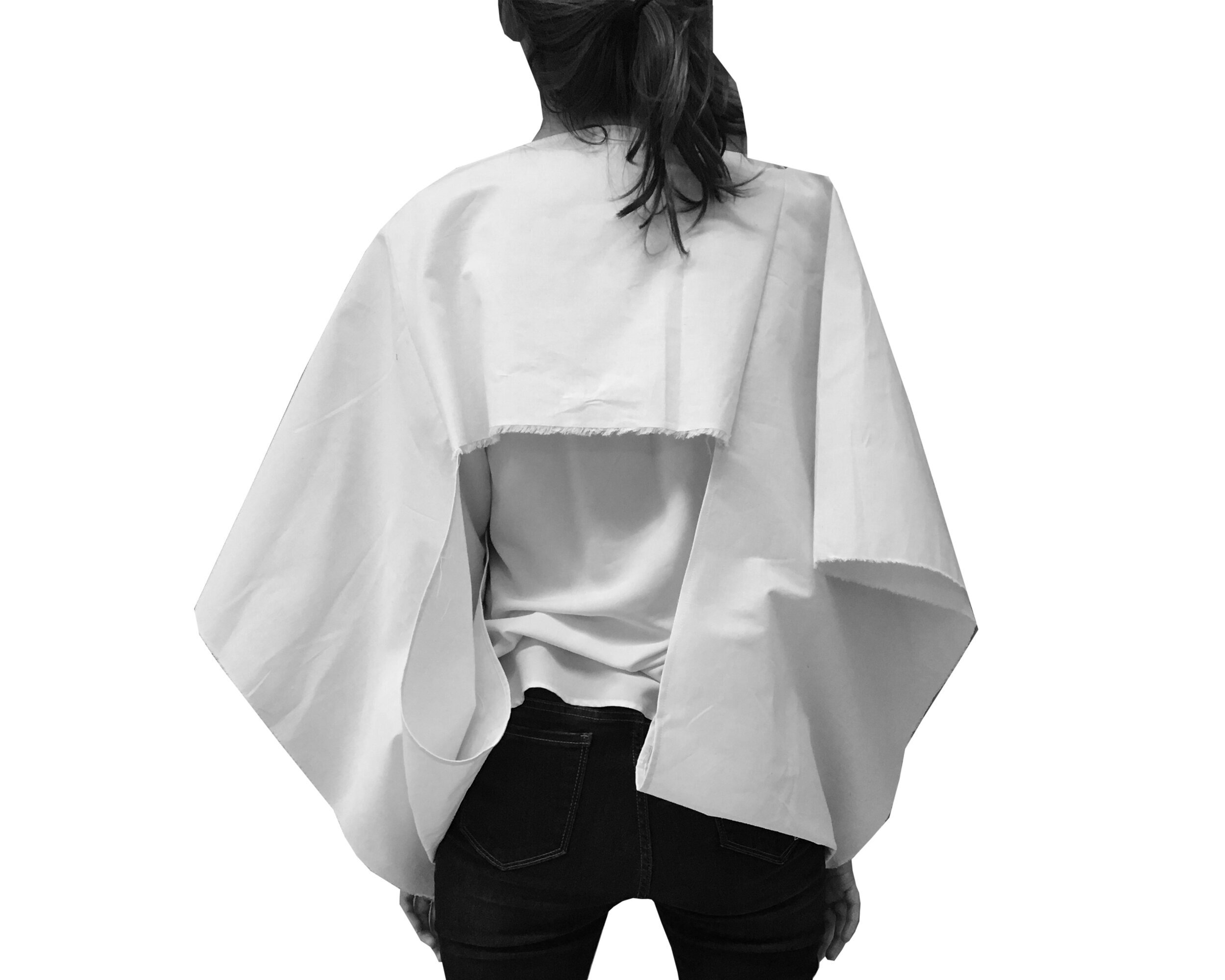
Sleeve back view
Two piece coat - User Testing both pieces for body movement.

Both pieces on to see how it flows.

Used different fabric, which made the donn time faster.

Added boning to the sleeve neck line, which helped the opening and ease of putting it on.
We chose a light wool fabric, for the final design. This was warm enough for the winter and still stylish and light enough to wear. We also added a belt to accentuate her waist. The best can only be seen from the front, because we couldn’t have it wrap around her whole body. That would’ve constricted her from putting on the coat properly. Also, the head opening for the body piece of the coat needed to be a stretch material, that way she could easily slide her head through the opening. We chose a ribbed stretch fabric and applied that to the back of the body piece.
MetroCard Device - The challenge was to find the right shape for easier swiping.
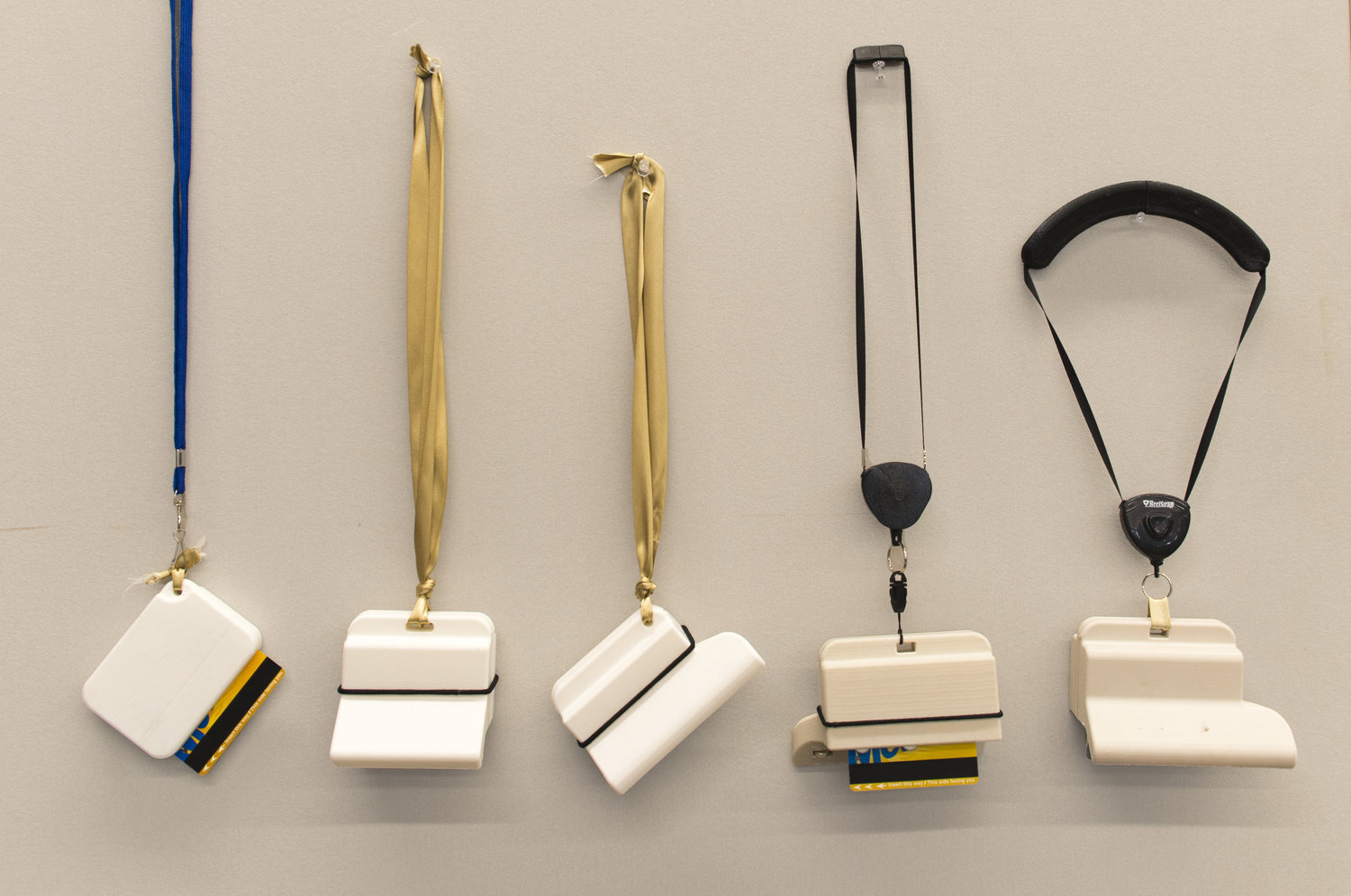
From left to right: Prototypes 1 - 5
Prototype 1: A rim to bite onto and swipe, but we quickly realized the swipe is much harder when using your mouth, and using her body motion would be better, and less noticeable to other commuters.
Prototype 2: We added a lip so that she could use her body to swipe, but it still wasn’t working. It still needed more structure to help her get the device on the swipe machine. We figured adding magnets to would her to latch onto the swiper.
Prototype 3: We added an addition to the lip so that the card could swipe, but the speed of the swipe was still a problem, so we thought using wheel magnet would help with the speed. We also noticed putting on and taking off the necklace was a problem, but adding a lanyard would help, because she could easily press onto it with her body from the button, and she could stretch it to take it off faster and retract to bring it back up.
Prototype 4: We noticed that putting on the necklace was still a problem, and she needed something stiff around the neck area, just like with her coat when we used boning.
Prototype 5: We added a ninjaflex 3d printing material to the back of the neckline. This helped her tremendously to put on the device around her neck. The ninjaflex material is a soft bendable material that is comfortable to wear, because it bends.
MetroCard Device - User Testing the swipe
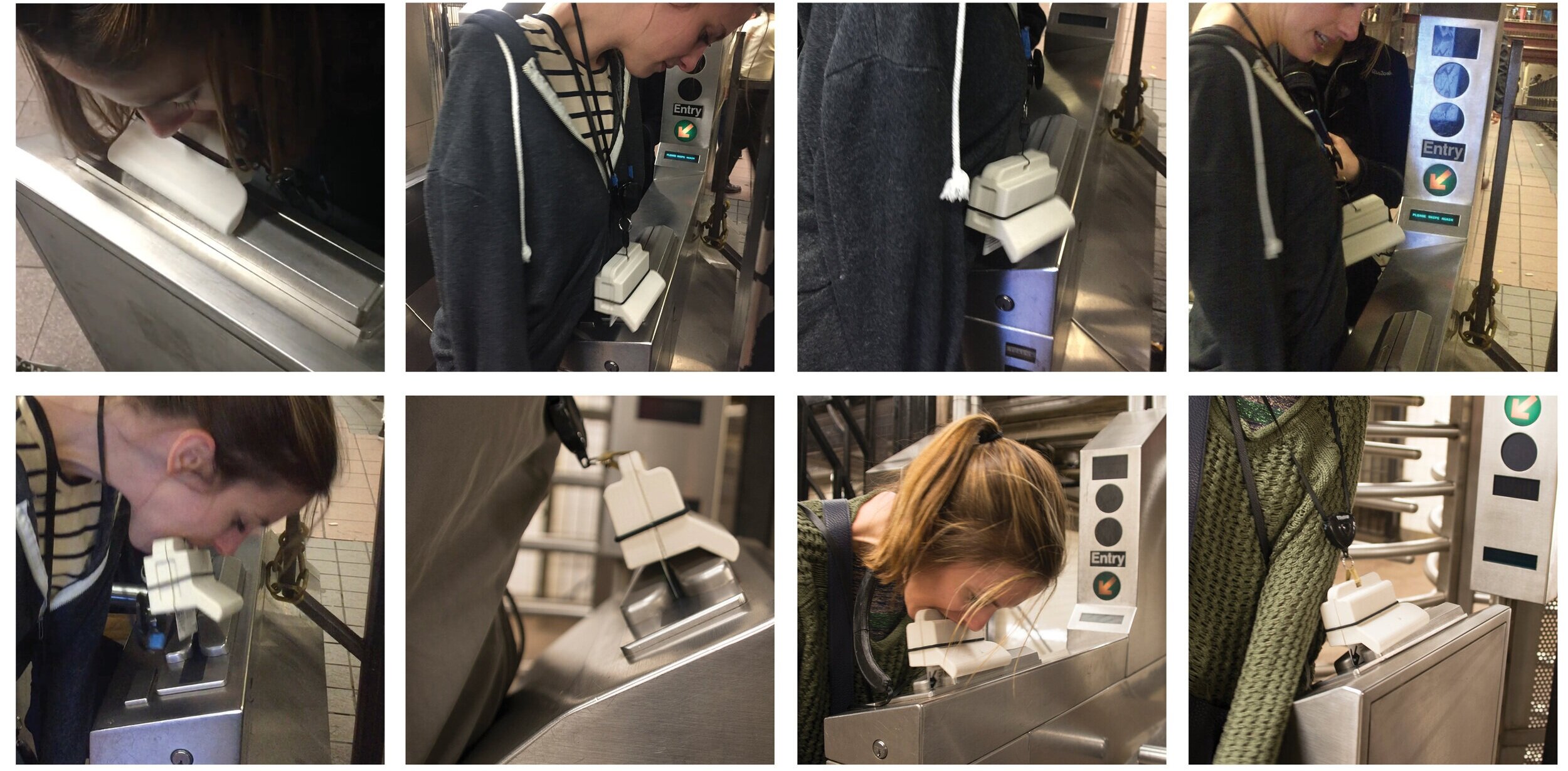
Outcome
We reduced the time of putting on a coat by herself to 1 minute, which is a 50% decrease.
Our team’s goals were achieved by designing solutions that function well, help our user live independently, and provide our user with better options. By using methods like 3D printing, we incorporated technology into helping Christina don on and off easier. Through applying methods within inclusive design such as direct observation, aesthetic consideration and designing for independence, we came up with better design solutions. We were able to cut down her time of putting on a coat at home, and helped her to independently don and doff the garment in any setting. The MetroCard device is helping her to be able to go anywhere she wants, without the help of a friend or colleague.



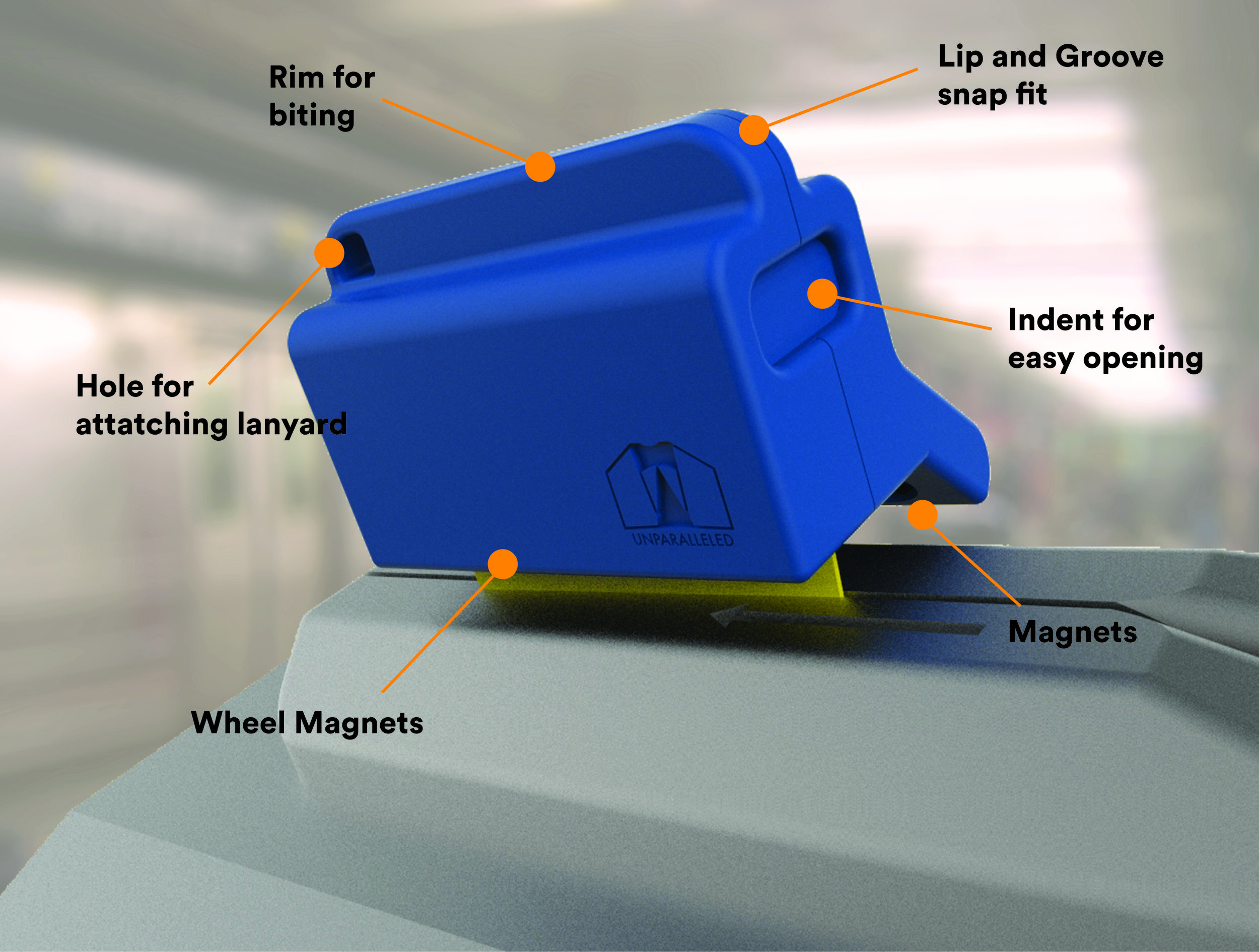

Press
Featured in two The New York Times articles and FaceBook Live. Voice of America featured article. Funambulist featured article. CNBC featured in video.

